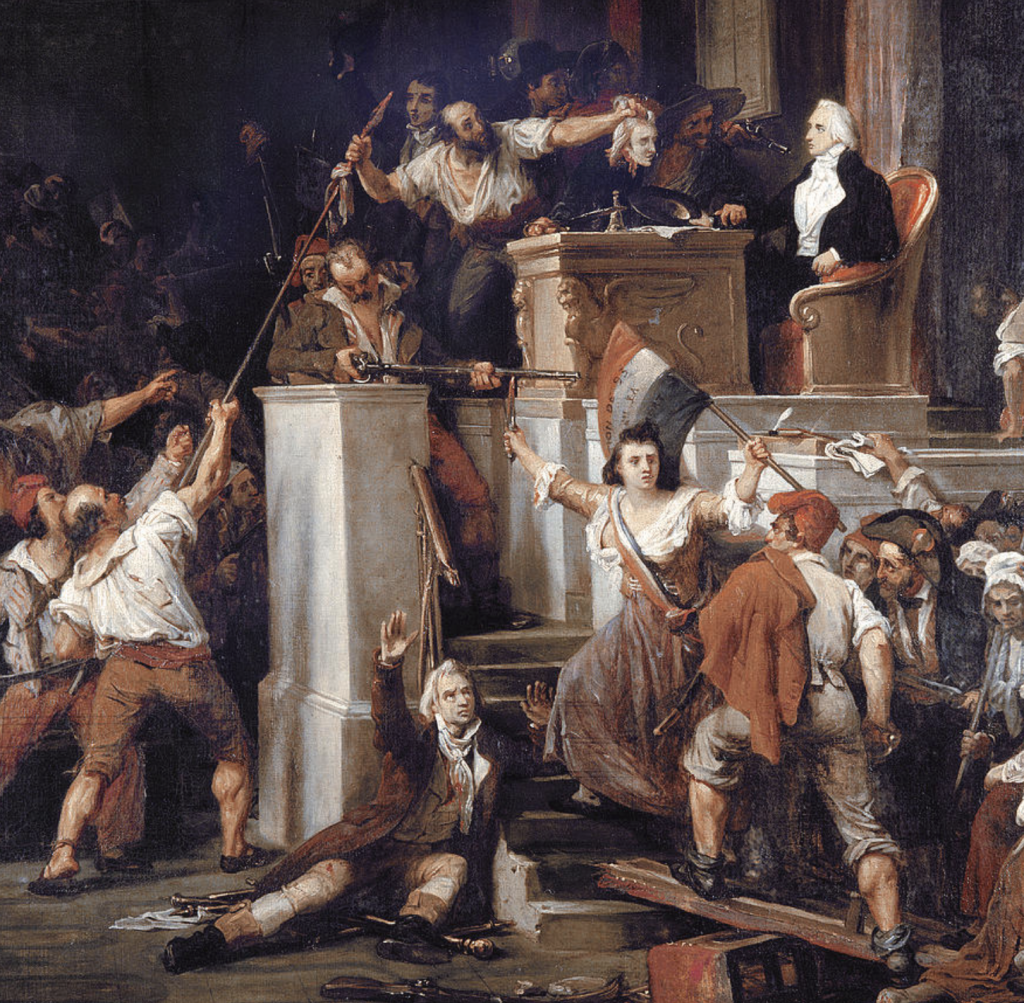
Christian Europe from the medieval period to early modern Europe had broad orders of social hierarchy that divided society members into estates which defined the social position of persons within society. They were called estates of the realm or three-estates. The best known system is the French Ancien Regime (Old Regime), a three-estate system which categorized society into groups based on socioeconomic factors like wealth, income, race, education, ethnicity, gender and occupation. The system was used until the French Revolution (1789-1799). The monarchy in France included the king, Louis XVI, and the queen, Marie Antoinette. The system was made up of clergy (The First Estate), the nobility (The Second Estate), peasants, bourgeoisie and urban workers (The Third Estate), the Commoners.

France’s involvement in the American Revolution, along with extravagant spending practices by King Louis XVI and his wife Marie Antoinette left the country on the verge of bankruptcy. War and debt broke the back of the monarchy. By 1788 the French government was bankrupt and a new land tax was proposed to be paid by all. Louis XVI called the Estates General, first since 1614, in hope of helping to advise him on the economical and agricultural crisis that France was facing. The voting system was by Estate and not by heads. Therefore, the deputies of the Third Estate, realized that in any attempt at reform they would be outvoted by the two privileged orders, the clergy and the nobility. They asked the King to allow a heads vote and he denied the request.
The Third Estate did not agree with king’s proposal which was to impose higher taxes on them. The king dissolved the meeting and closed the hall to prevent any further meetings. The Third Estate already paid most of the taxes: tithes to the Church, tax on goods brought to the city, poll tax, income tax, salt tax, land tax, and feudal dues for use of local manor’s winepress, oven, etc. Its deputies decided to call themselves the National Assembly and claimed the right to speak to the nation. They intended to make laws without royal approval. The king closed the hall where the National Assembly was to meet, so they met on a tennis court. On June 1789, the members of the French Third Estate took the Tennis Court Oath, vowing not to separate, and to reassemble wherever circumstances required, until the constitution of the kingdom was established. In the face of solidarity of the Third Estate, King Louis XVI relented and ordered the clergy and the nobility to join with the Third Estate in the National Assembly. An attempt at counter-revolution let them formulate their claims virtually based on privilege and social status. Mirabeau, an ex-noble, told the King that he was a stranger in the Assembly and did not have the right to speak there.
It was an important revolutionary act that displayed the belief that political authority came from the nation’s people and not from the monarchy. This was a pivotal event in the French Revolution. Estates-General ceased to exist and became the National Assembly two years later. Renamed National Constituent Assembly (1789).

Burdened by heavy taxes imposed by the First and Second Estates and continuous grievances against royal absolutism created a fertile soil for a spontaneous social upheaval that culminated with the storming of the Bastille; a hated prison in Paris where people were routinely held without charges. The fall of the Bastille spread the revolution to the provincial towns and the countryside. This event coincided with peasant attacks to nobles’ castles and general disorder.

Poor weather and harvests, and the withholding by police of public grain supplies from the royal stores in 1773-74 provoked a large-scale revolt, known as the Flour War. The price of bread in Paris had increased beyond the ability of many of the poorer residents to buy it. The situation subsided following wheat price controls imposed by Turgot, Louis XVI’s Controller-General of Finances (before the supply recovered), and the deployment of military troops. The combination of a bread shortage and high prices angered many French women, who relied on bread sales to make a living. Paris women’s initially stormed the city hall and then proceeded to march to Versailles, the site of the government. The ultimate goal was to bring King Louis XVI back to Paris where he would be responsible to the people, and to the reforms that had begun to be passed earlier. Thus, they would march to the Palace of Versailles and demand that the king respond. The king was finally convinced to appear before the crowd. The crowd accompanied the royal family back to Paris, where the king and queen and their court took up residence at the Tuileries Palace. Two weeks later, the National Assembly also moved to Paris. All feudal privileges were formally abolished by the Constituent Assembly and the Declaration of the Rights of Man and Citizen was declared its’ formal manifesto.

References:
E. J. Hobsbawm. ‘The Age of Revolution 1789-1848’, Abacus edition, 19862.
Encyclopedia Brittanica vol.9 ‘France’3.
Edward Burke. ‘Reflections on the Revolution in France’. Anchor Books, 1989